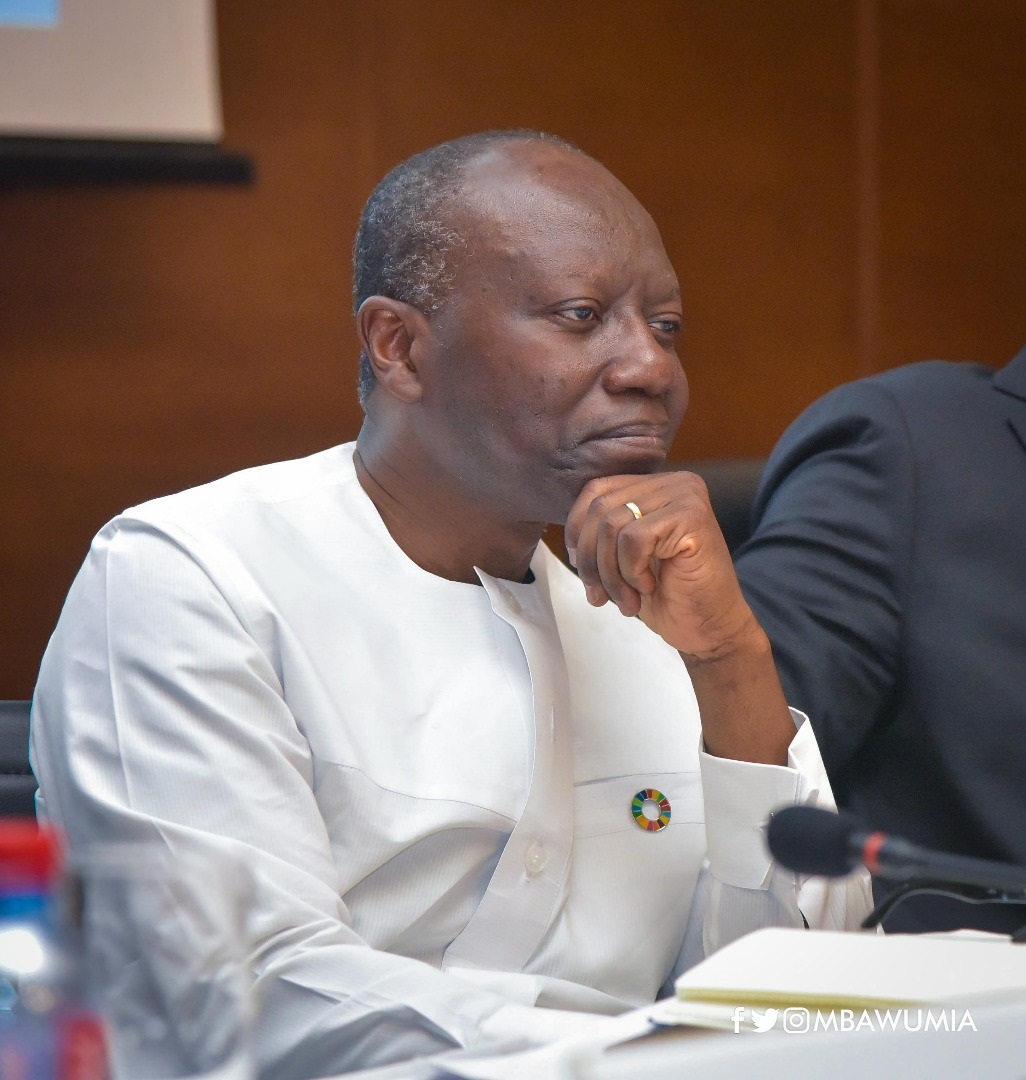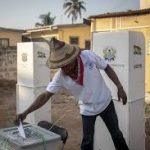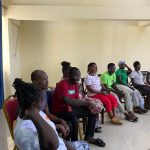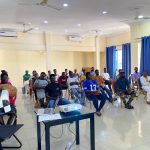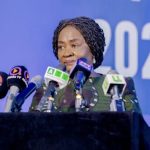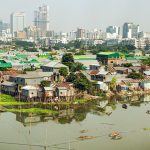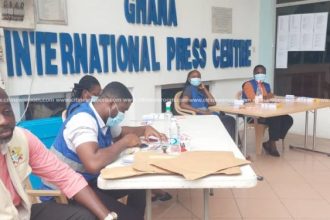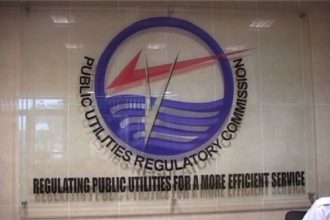SEND Ghana, a Policy Research and Advocacy Civil Society Organization has put out an in-depth analysis of the 2020 Budget Statement and Economic Policy which was presented by the Minister of Finance on November 13, 2019.
The Organization’s post budget analysis which was presented to the media last Wednesday by Dr Emmanuel Ayifah, Deputy Country Director, draws government’s attention to weaknesses in the budget, cautioning that such flaws could pose a threat to attaining Ghana Beyond Aid and accomplishing the Sustainable Development Goals (SDGs)
The analysis identified some cross-sector and sector-specific concerns as well as Budget credibility and overdependence on donor funding, cut across assessed sectors.
Below is the detailed assessment of the budget :
I am delighted to welcome you to this morning’s press conference and to thank you for honouring our invitation. In recognition of the critical role the media play in deepening Ghana’s democratic governance, we have invited you to share with you our preliminary assessment of the 2020 Budget Statement and Economic Policy presented by the Minister of Finance on November 13, 2019. Our analysis of the budget identified some cross-sector and sector-specific concerns. Budget credibility and overdependence on donor funding, cut across assessed sectors.
We are drawing government attention to these weaknesses because they possess a threat to attaining Ghana Beyond Aid and accomplishing the SDGs. CROSS-SECTOR OBSERVATIONS Ensure fiscal discipline to meet budget credibility standards “Budget credibility,” defined here as, the degree to which governments execute budgets as planned – and as approved by our parliament, is key to effective delivery of public services.
We expect the budget to guide spending towards effective service delivery; with specific concern for the impact on the poor and vulnerable, and in the attainment of the SDGs. Our analysis of previous year’s budgets (2017-2019), show repeated poor budget execution rate, evident in either under spending or over spending in aggregate and/or within a specific area. Total expenditure for 2020 amounts to Ghc84.5 billion, yet government expects to mobilize approximately GHC 67.1 billion in revenue and grants to finance this expenditure. As has become a practice, government is unable to meet its revenue targets year on year. The expenditure for 2020 is in a deficit of 21 percent as against 19 percent in 2019.
The higher-than-programmed fiscal deficit result mainly from revenue underperformance, which, in the year-to date, achieved an execution rate of 86.4 percent. Total Revenue and Grants for the period, amounted to GH¢36.3 billion, (10.5% of GDP) relative to the target of GH¢42.0 billion (12.1 percent of GDP). Although expenditures were also below target, the expenditure execution rate of 92.5 percent outstripped the revenue execution rate by a significant 6.1 percentage points. Our budget deficit Page 2 of 10 keeps increasing with non-fulfillment of expenditure commitments, year on year, due to shortfalls in domestic revenue mobilization.
This results in situations where government resort to the international market to raise funds to finance expenditure, thus, ballooning our debt, as evident in our inability to meet the debt to GDP target. The agenda to go beyond aid must be seen to be working through incremental and sustained domestic financing that will take the country out of the deficits that has to be funded through borrowing.
We expect the budget to guide spending toward effective delivery of public services. However, repeated deviations, as has been the case overtime, diminish confidence and raises concerns about commitments to projected allocations to the various MMDAs. Actual releases for the Department of Children and other child protection agencies have consistently been less than 40% of budgetary allocations. The 2017 and 2018 reports of the Auditor General’s department reveals that, actual expenditure for the Department of Children in 2017 and 2018 was 6.71% and 34.97% respectively. These actual releases are woefully inadequate to ensuring the availability of resources and realization of the mandate of the Child Rights Promotion, Protection and Development Department. Similarly, actual releases have been below approved budget in the Fisheries and Aquaculture Ministry, despite challenges with infrastructure development such as fishing harbor and landing sites.
We observe underspending, due to challenges with the release of approved budgeted funds. For instance, in 2018, the total approved budget for CAPEX was GHc 39,142 million, but only 15.8 percent (GHc 6, 208 million) was released. The education budget is generally overspent, but the margins of spending particularly with Government of Ghana’s contribution is too high. For instance, expenditure for 2018 on compensation, goods and services and capital expenditure from government allocation increased by 23 percent, 25 percent and 273 percent respectively by December 2018, over and above what was appropriated to the Ministry.
The SDG indicator 16.6.1, measures whether government spending is in line with the country’s approved budget. In 2018, key ministries such as the Ministry of Gender, Children and Social Protection (MGCSP), Ministry of Food and Agriculture (MoFA), Ministry of Water Resources and Sanitation, among others did not receive their entire approved budgetary allocations. Achieving key goals and targets of the SDGs will largely depend on the execution of government budgets. The implications of weak budget credibility adversely affect the delivery of public service, with devastating consequences on the poor and vulnerable Ghanaians.
We call on government to ensure a systemic change from the observed paradigm of repeated budget deviations. Government should takes steps to prepare realistic budget to avoid credibility issues. We Page 3 of 10 therefore urge the government to take appropriate steps to prepare realistic budget and endeavor to timely release all budgetary allocations to MDAs.
The budget is over reliant on donor funding Page 11 of the Ghana Beyond Aid Charter and Strategy Document, 2019, indicates that, the Ghana beyond Aid agenda, is about Transforming and Growing out of Dependence on Aid. Contrary to government’ laudable vision’, we observe from our analysis of the budgets (2017- 2020) that, the Government of Ghana is yet to put in place meaningful measures to reduce development of critical sector of economic and social services including on funding by Development Partners (DPs).
Capital investment for basic services basic education, health, sanitation and water resources. Donor partners’ contribution to the Department of Child Rights Promotion, Protection and Development‘s (CRPPD) budget in 2017, 2018 and 2019 was 79.3, 94.8 and 77.1 respectively. Low government support has implications on the implementation of the department’s programs as donor funds can only be used to fund goods and services. It is not surprising why regional and district offices of this important department are under-staffed, lack logistics and communication resources.
This raises questions about government’s commitment to promoting child protection issues. In spite of the government’s policy announcement to reduce grants as a percentage of budgetary expenditure on goods and services and on CAPEX to not more than 10 percent by 2023 for every Ministry and Service, we observed government is far from near the target. For the Ministry of Sanitation and Water Resources, GOG and other sources (IGF and ABFA) contribution to CAPEX averaged less than a third (21.5 percent), relative to donor funding, over the period 2017 to 2020. Particularly, for the 2020 budget, only 11.8 percent of allocation for CAPEX is from GOG and other sources (IGF and ABFA) combined, and the remaining 88.2 percent is by DPs. Over reliance on DPs has serious implications on the implementation of interventions, especially when DP support is dwindling, donor focus or priority changes and sometimes releases delay.
Indeed, page 32 of the 2020 budget indicates that, grants disbursements by DPs continued to trail the target by 29.8 percent, and is largely attributed to the delayed disbursement for key grant funded projects. In such circumstance, there is no guarantee that government will be able to raise the needed funding from other sources to fund various interventions. Page 4 of 10
Sector Specific Observations Health
Complete and equip all community health facilities & CHPS and make them functional.
We commend government for starting the construction of 26 community clinics in 2019, and its commitment to continue constructing CHPS compounds in 2020. The building of such facilities, especially in rural communities will go a long way to improve access to healthcare delivery among the poor and the vulnerable.
This is also a good step towards Ghana’s commitment to attaining universal health coverage, using comprehensive primary healthcare. However, the building of facilities without the necessary equipment to function will not achieve the intended outcome. Our recent monitoring of some health facilities across the country indicates that, some facilities lack personnel and logistics to work with.
A particular case in point is the new regional hospital in Wa which was completed in 2016 but it took three years to be commissioned (August 2019), and has since not been operationalized due to unavailability of logistics and personnel. Other facilities that have been completed and are not in use include, Jerigitinga CHPS in the East Mamprusi municipal and Oborpah Djerketi in the lower Manya krobo district etc.
We also note that, some 26 projects that were started across the country between 2017-2019 including Nsawkaw District Hospital, Salaga District Hospital, Konongo District Hospital, Twifo Praso District Hospital, Madina District Hospital, Tepa District Hospital, Kumasi Regional Hospital have not been completed as scheduled.
Our analysis of the execution rate for capital expenditure is also very low. We therefore call on government to complete all projects captured in the 2020 budget and operationalize completed projects that remained unused. Release All funds due the NHIA In the health sector, the government has in two consecutive years (2019 & 2020), failed, to allocate all the funds expected from the NHIS levy and the SSNIT contribution to the NHF for the scheme to undertake its operations.
Our 2019 analysis show that, government retained GH₵500million of NHF and neglected to provide a purpose for which it was withheld. We observed again in our 2020 analysis that, government intends to retain GH₵390 million without any justification. In keeping faith with the goal of the NHIS of ‘‘providing financial risk protection against the cost of quality health care’’, the Ministry of Finance should ensure that all revenue collected on behalf of the NHF are released to the scheme in compliance with the VAT law. The retention of some revenue for the NHIA without disclosure smacks of a lack of transparency, and Page 5 of 10 thus, deprives the scheme from timey reimbursing health facilities to provide basic commodities for healthcare delivery. The poor and the vulnerable groups are mostly affected.
Ensure sustained increase in domestic financing for immunization activities Seven years into exiting from the co-financing agreement of immunization with the Global Alliance for Vaccines and immunization (GAVI), the 2020 budget is not explicit on government’s intentions for immunization financing. For the first time since 2012, there has been a complete absence of a dedicated budget line for immunization financing in the budget statement.
This is worrying considering government’s constant defaulting of co-financing obligation to GAVI. Also, this is likely to offset the country’s enviable coverage record of 98% of Penta 3 and other vaccines should GAVI reneged on its part of the obligation too.
The recent outbreak of polio in Cheriponi in the North East region, Tamale Metro in northern region and Agbogbloshie in the Greater Accra region should be a great source of concern and a wakeup call for government to be committed to immunization financing. Government should clearly show commitment to transition from counterpart funding to full self-financing of routine immunization activities.
We also recommend that, government should consider earmarking immunization financing just like NHIS in future budgets. Pay equal attention to the provision of cold chain at the sub-district level One key challenge identified in the Extended Programme on Immunization (EPI) 2018 performance report impeding their activities has been inadequate cold chain at the sub district level. The 2020 budget speech is overly focused on Last Mile Distribution (LMD) at the regional centers. Government should find space in the limited goods and services allocation to provide cold chain facilities to all the remaining the facilities at the sub-district level; and also, the needed logistics.
This will boost outreach services to all children leading to prevention of vaccine preventable diseases.
Water Sanitation and Hygiene
Prioritize sanitation and hygiene The number of interventions in 2020 WASH sector budget prioritizes water over sanitation despite the fact that only 14.3 percent of Ghanaians have access to improved sanitation, compared to 87 percent access to safe drinking water (UNICEF/WHO, 2015). Although government has set the target of ensuring that the country will achieve Open Defecation Free Page 6 of 10 (ODF) by 2020, the MICS 2017 report shows that 22% of Ghanaians still practice open defecation. Our analysis of the WASH sector budget of 2017-2020 show that the Ministry of Sanitation and water resources receives an average of 0.37 percent of government’s total expenditure.
This questions government’s commitment to allocate 0.5 percent of its GDP to sanitation. For Ghana to meet the SDGs goal 6, more effort is needed in terms of investment in sanitation and water. Additionally, sanitation laws must be enforced strictly. This is especially important given the implications of poor sanitation on the health of the people, perennial flooding and the economic impact of addressing these issues. ‘An ounce of prevention is worth a pound of cure’.
Education
Time to turn attention to quality educatio a recent, World Bank report, 2019 acknowledges that although Ghana has done well in terms of enrolment for basic and second education, there is no corresponding improvement in the quality of education. It is worth noting however that, the 2020 Ministry of Education’s budget line for goods and services, which will fund interventions to promote quality education has declined to 10 percent (Gh1.3b) from 24 percent in 2019 for all levels of education.
The implication is that the development, printing and supply of curriculum, textbooks and training for teachers might be affected. Besides, changing curriculum and training teachers alone may not promote quality education. Therefore, while urging government to provide funds to make available textbooks on timely basis and ensure each child has access to required number (1:1) of core textbooks, we also ask for reduction of huge class size to the standard of one (1) teacher to 35 pupils.
We also call on government to step-up monitoring and supervision over teaching and learning, under the new curriculum to improve the quality of education. Prioritize sustainable funding for inclusive and non-formal education
We note that, donor driven measures are often not sustainable, and government finds it difficult to provide adequate funding for non-formal education when donors exit. In 2020 government intends to enroll 170,000 out-of-school children into the school system and pass the Complementary Education Agency bill 2019 into an act. While this is laudable, we call on government to stop short-changing units overseeing vulnerable groups’ education by releasing budgetary allocation in its totality to them. Government should also prepare a costing framework Page 7 of 10 for complementary education and link it to sustainable funding to get every child to go and stay in school in order to attain SDG 4.
Food and Agriculture Target the Vulnerable under Planting for Food and Jobs Program We applaud government for the inclusion of women friendly crops such as cowpea, vegetables and orange flesh sweet potatoes in the PFJ project commodity basket. However, government needs to institute deliberate mechanisms to link the poor and other disadvantaged groups especially small holder women farmers, disabled farmers and LEAP beneficiaries to benefit from the Planting for Food and Jobs program. Additionally, government should make effort to identify the 2.4 million extreme poor Ghanaians with capacity to engage in small scale farming and support them with the subsidized inputs under the PFJ programme, and also as a matter of urgency take steps to halt the smuggling of inputs as have been widely reported in recent times. Target all schools in cocoa growing communities under the ‘National Cocoa Drinks’ project Government promised to Pilot the National Cocoa Drinks project in public primary schools and kindergarten to benefit 1 million pupils in the 2020 budget. While we laud this initiative, we urge the government to prioritize all schools in cocoa growing communities and not just those on the School Feeding Program.
Fisheries and Aquaculture Increase budgetary allocation to MoFAD Although the fisheries and aquaculture sector contribute 5 percent of the GDP in agriculture, allocation to the sector over the past three years has been very low, stagnating at 0.1 percent of the total national expenditure. While we commend Government for the introduction of Aquaculture for Food and Jobs initiative, we observed in our budget analysis that Government has not given the sector the needed attention in terms of increased budgetary allocation. The low Government allocation has the implication of denying the fisher folks from benefitting from increased investment in the sector and have also affected the recruitment of extension officers, to provide adequate and timely information to the stakeholders along the fishing value chain. Ghana therefore risk not meeting the SDG 14 target of providing access for small-scale artisanal Page 8 of 10 fishers to marine resources and markets. We therefore call on Government to increase budgetary allocation to the sector to boost the huge potential of the sector to create jobs, improve livelihoods and nutrition especially for women in the fishing communities. SOCIAL PROTECTION Complete the Ghana National Household Registry (GNHR) to improve targeting of the extreme poor: We acknowledge government’s commitment to expand pro poor interventions such as the National Health insurance scheme (NHIS), school feeding to cover more beneficiaries in the 2020 budget. However, the completion of the national household registry to streamline social protection targeting is stalled. To ensure effective and more efficient targeting of the extreme poor, government needs to fastrack processes leading to the completion of the national household registry. This will also help address ‘inclusion and exclusion errors’ that characterizes the selection of beneficiaries for social protection interventions. The Ghana Statistical Service (GSS) and the Ministry of Gender, Children and Social Protection (MoGSCP) could explore the possibility of using the 2020 population consensus to capture the same data in a more creative, efficient and cost manner to ensure prudent public resource management. Strengthen district structures, increase monitoring & supervision for effective implementation of GSFP. Government made commitment in the 2020 budget to inaugurate District level structures to enhance quality of service delivery in the Ghana School Feeding Programme (GSFP). While this lends credence to deepening the country’s decentralization process, we call on the government to ensure that, this great initiative is free from political capture. MMDAs should be given much room to operate while the school feeding secretariat or the Ministry increased monitoring and supervision to forestall financial leakages, mismanagement and corruption that have historically undermined the impact of the programmme. Finally, government needs to adopt measures to enhance institutional collaboration and coordination at the national level to improve transparency and accountability in the management of the programme.
Child Protection and Welfare
Allocate adequate resources to support the implementation of child related policies and programmes The Justice for Children, Child and Family Welfare policies and the five-year strategic plan to address adolescent pregnancies require approximately GH 40 million for implementation in 2020. Page 9 of 10 Yet, the MoGCSP is left with only GH 40,434,272 to implement its core functions after deducting allocations to LEAP, GSFP and compensation. This suggests that the amount is woefully inadequate given the meagre budgetary allocation to support the Ministry’s five (5) programmes including children right promotion.
According to a Daily Graphic (October 30, 2019) report, in 25 years, not a single girl has ever completed the Sawoubea Junior High School in the Wa East district due to early marriages. It notes further that, a total of 7,293 teenage pregnancies were recorded in basic and second cycle schools in the 2018/2019 academic year across the country.
In the wake of the high rate of teenage pregnancies, cases of defilement, and other forms of child abuses, adequate budget is needed to aggressively implement child protection related interventions in order to protect the future of young children. SDGs Mandate MDAs/MMDAs to show the SDG Goals and targets under each budget programme: Government efforts towards ensuring that key outputs of the budget and economic policies are linked to the SDGs targets and indicators, and also produce on annual basis, SDG budget report to show how Ghana is tracking the financing of the SDGs is commendable.
We, however, recommend that all MDAs/MMDAs should be mandated to show the SDG goals and targets under each budget programme and include them in their presentations during budget hearings. This will help to ensure that SDGs budgeting is institutionalized in all MDAs and MMDAs and also help monitor MDAs/MMDAs performance on the SDGs.
TAX Address worsening tax revenue (% of GDP) The tax revenues as a percentage of GDP hovered around 16.9 and 16.5 respectively for 2017 and 2018. It declined sharply in 2019 to 13.1 recording the lowest amongst the three years. for the provisional figures given so far for 2020, the country is likely to record a further drop of the tax revenue to GDP to 12.4 % of GDP which is below the required threshold of about 22% to 25% (median tax-to-GDP ratio worldwide 26.2%; 19.1% in Africa, 22.8% in Latin America and 34.3% in the OECD). Our expectation is that government will aggressively address this shortfall.
Government’s ambitious flagship programmes cannot see the light of day if enough tax measures are not put in place to increase revenue levels. The indication of reforms at the Ghana Revenue Authority by the finance minister is a welcoming news. We believe that the institution which has oversight responsibility in collecting taxes must be strengthened in all forms either legally or Page 10 of 10 administratively.
The development of abridged versions of tax obligation documents by the GRA is also commendable. This will help the GRA to interface with the public in a friendlier and customer focused manner. When individuals can easily understand and get by their tax obligations, it will encourage the filing of tax returns. GRA should simplify tax relief application processes to encourage tax compliance The announcement by the minister to adjust the personal income tax band (the 12 percent in minimum wage increase for 2020 is tax-exempt) is a welcoming news, since it is progressive.
This will contribute in no small way to lessen the tax burden on employees, especially those in lower income brackets. Besides, the upward review of Personal Reliefs such as marriage relief, child education relief and old age relief is a step in the right direction. However, we entreat the GRA to simplify tax relief applications and intensify education in order for the public to benefit. This will enable qualifying individuals take advantage of this policy, thereby increasing their disposable income.
We thank you for your attention.
By Publicagendagh.com


